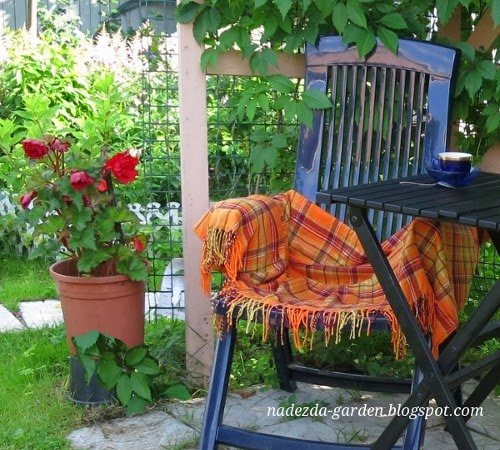I think the Russian poet Alexander Pushkin's poem goes well to Krylov's painting:
The snow below the azure skies,
As though a magic carpet lies,
And in the light of day it shimmers.
The woods are dusky. Through the frost
The light-green fir-trees are exposed;
And under ice, a river glitters.
As though a magic carpet lies,
And in the light of day it shimmers.
The woods are dusky. Through the frost
The light-green fir-trees are exposed;
And under ice, a river glitters.
Nikifor Krylov finely felt the nature in a winter day. Bluish shadows lie on the snow, the sky is covered with clouds, objects are clearly silhouetted against the snow. Human figures enliven landscape, people are busy daily chores: two women met on the way to the ice-hole where they rinsed their linen, a high stately peasant woman carries water in wooden buckets on a yoke, a young farmer leads a horse by the bridle.
About
the Nikifor Krylov's life is known that in his youth he painted the
iconostasis in the Tver province monastery. Also in the monastery
Krylov began to draw from nature and to paint portraits. In 1825 he
arrived in St. Petersburg starting the drawing classes at the Academy
of Fine Arts.
Nikifor Krylov's paintings are too little known. His work “Winter Landscape” (or “Russian Winter”) appeared on the Academy of Fine Arts exhibition in 1827 and made a strong impression on the audience.
Nikifor Krylov's paintings are too little known. His work “Winter Landscape” (or “Russian Winter”) appeared on the Academy of Fine Arts exhibition in 1827 and made a strong impression on the audience.
There
is evidence about this landscape history in the documents of the
Company to promote artists. Patrons of art were found when young
Krylov intented to fulfill the winter view from nature. He chose a
place near the village of Tosno close to Saint Petersburg. There the
patrons built a studio for him, the artist were given a cash benefit
on all the time of his work.
Working
on the landscape, Nikifor Krylov remained faithful to principles
derived by the Academy of Fine Arts professors: "nothing else
than to depict nature and obey it."
Today the landscape has changed. Near the river a speed railway runs. Several times a day express trains from St. Petersburg to Moscow and back break the silence of the woods. Now standing on the high bank of the river Tosno you can see and hear the rushing express train.
Do you love winter landscapes or you think they are boring? Thank you!












































